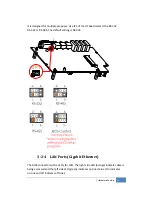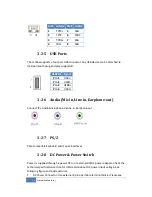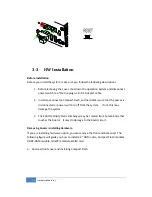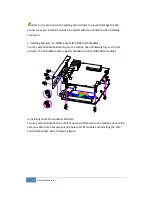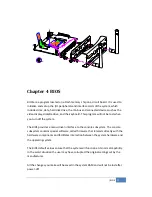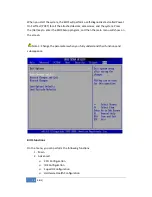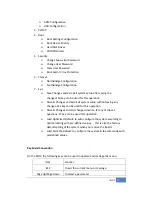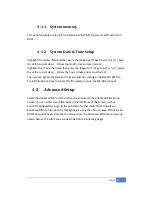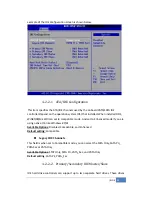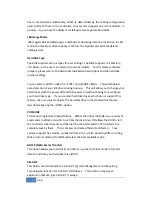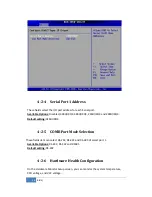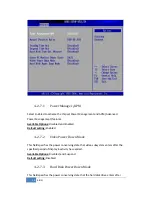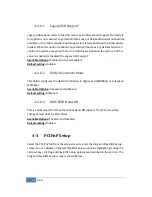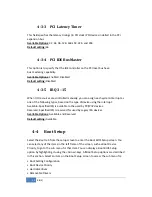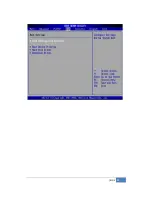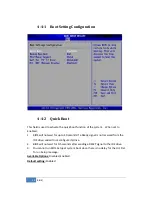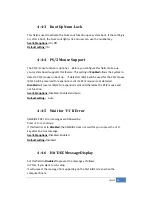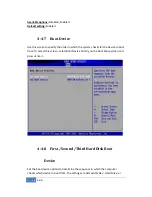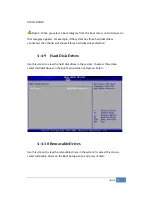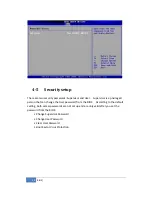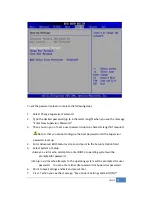
24
BIOS
|
have
a
master/slave
relationship,
which
is
determined
by
the
cabling
configuration
used
to
attach
them
to
the
controller.
Your
system
supports
one
IDE
controller
–
a
primary
–
so
you
have
the
ability
to
install
up
to
two
separate
hard
disks.
LBA/Large
Mode
LBA
(Logical
Block
Addressing)
is
a
method
of
addressing
data
on
a
disk
drive.
In
LBA
mode,
the
maximum
drive
capacity
is
137
GB.
The
Optimal
and
Fail
‐
Safe
default
setting
is
Auto
Hard
Disk
Type
The
BIOS
supports
various
types
for
user
settings,
The
BIOS
supports
<Pri
Master>,
<Pri
Slave>,
so
the
user
can
install
up
to
two
hard
disks.
For
the
master
and
slave
jumpers,
please
refer
to
the
hard
disk’s
installation
descriptions
and
the
hard
disk
jumper
settings.
You
can
select
<AUTO>
under
the
<TYPE>
and
<MODE>
fields.
This
will
Enabled
auto
detection
of
your
IDE
drives
during
boot
up.
This
will
allow
you
to
change
your
hard
drives
(with
the
power
off)
and
then
power
on
without
having
to
reconfigure
your
hard
drive
type.
If
you
use
older
hard
disk
drives,
which
do
not
support
this
feature,
then
you
must
configure
the
hard
disk
drive
in
the
standard
method
as
described
above
by
the
<USER>
option.
PIO
MODE
PIO
means
Programmed
Input/Output.
Rather
than
have
the
BIOS
issue
a
series
of
commands
to
affect
a
transfer
to
or
from
the
disk
drive,
PIO
allows
the
BIOS
to
tell
the
controller
what
it
wants
and
then
let
the
controller
and
the
CPU
perform
the
complete
task
by
them.
This
is
simpler
and
more
efficient
(and
faster).
Your
system
supports
five
modes,
numbered
from
0
to
4,
which
primarily
differ
in
timing.
When
Auto
is
selected,
the
BIOS
will
select
the
best
available
mode.
BLOCK
(Multi
‐
Sector
Transfer)
This
option
allows
your
hard
disk
controller
to
use
the
fast
block
mode
to
transfer
data
to
and
from
your
hard
disk
drive
(HDD).
S.M.A.R.T
This
field
is
used
to
activate
the
S.M.A.R.T
(System
Management
and
Reporting
Technologies)
function
for
S.M.A.R.T
HDD
drives.
This
function
requires
an
application
that
can
give
S.M.A.R.T
message.


